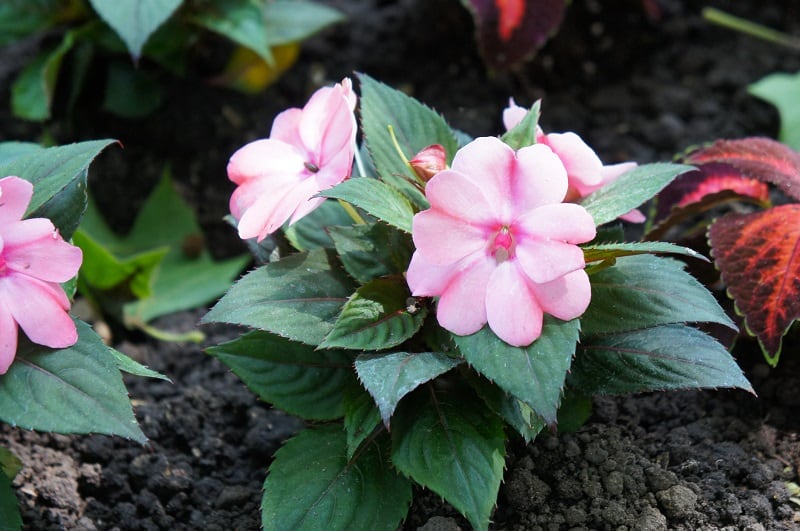
Double impatiens plants are also called Rockapulco rose plants. They are annual plants that grow up to 20 inches tall. These plants have pink flowers that resemble delicate, miniature roses. They are easy to grow, and thrive in partial or full shade and moist, well-drained soil. However, like most plants, they can also be prone to diseases and conditions that cause yellowing leaves.
Double Impatiens Leaves Turning Yellow: Common Reasons
Too much or too little water
The leaves of your plant may be turning yellow because you are giving it too much water. Fix this problem by removing the yellow leaves and poking holes in the soil with a pencil or stick. This way, the roots can begin to breathe again. You may also need to adjust your watering schedule, leaving longer periods between watering. Check to see that the top few inches of soil are dry before watering again.
Inversely, you may not be watering your plants enough. Yellowing leaves can also be an indication that the plants are thirsty. Water your plants from the bottom by filling the sink with a few inches of water and putting the plant in its container into the sink. This way, the roots will get properly hydrated.
Nematodes
Double impatiens leaves could be turning yellow due to nematodes. These are small, skinny worms that attack the roots of the plants. If these worms are the culprit, you need to dig up the plants and dispose of them before they can infect other, healthy plants.
Fungal Diseases like Botrytis Blight and Verticillium Wilt
Your double impatiens may have yellowing, wilting leaves due to Botrytis blight. This is a fungal disease that affects vulnerable plants. To remedy this, cut away the infected parts and dispose of them at once. Mist the plants with a solution of water mixed with 10 percent bleach to kill the fungus and prevent any spread to other plants. Also increase the space between the plants for better air flow.
Another fungal disease that could be the culprit is Verticillium wilt, which attacks the soil first. To eradicate this fungus, remove the plants and destroy them to prevent any spread to other plants. You could also use fungicides to help fight this fungus.
Downy mildew
Double impatiens leaves may also turn yellow due to downy mildew. These oomycete microbes are parasites that live on plants, and the symptoms are usually brown spots on the leaves, which then turn yellow. To fix the issue, remove and dispose of the entire infected plant. Avoid replanting other plants in the same spot unless you have removed and replaced the infected soil.
Double Impatiens: Care and Facts
Double impatiens plants, or Rockapulco roses, are also called impatiens balolestop. Their botanical name is Impatiens walleriana, and they are very easy to care for. Deadheading is not necessary for these plants, but you may opt to remove the spent blooms.
Provide these plants with a shady spot, although they can also tolerate full sun. Do not let them dry out too much to avoid wilting and yellow leaves. They need to be trimmed back and can be pruned to your desired shape. If the plants get too tall, you can cut them back for additional branching and a more compact form.
Apply fertilizer or compost on plants in garden beds, and regularly fertilize those in pots to ensure healthy growth. These plants like warm weather and may also thrive in humid, shady places such as courtyards. Each plant forms a symmetrical mound of dark green foliage and in a few weeks will produce double flowers in dainty colors.
Double impatiens plants prefer full shade to partial shade and are usually used as fillers in containers. They are dubbed “impatients”, since they are very eager to start blooming in the early spring. This makes them the perfect additions to flower beds and containers.
These perennial plants prefer regular watering along with small amounts of fertilizer. They can spread up to 24 inches, but they are not aggressive plants. Allow them 10 to 12 inches of space if planted in the ground, and plant them at least eight inches apart if grown in containers.
Conclusion
Double impatiens plants are popular for their flowers, which look like miniature roses. These perennial beauties, while easy to grow, can also suffer from diseases and conditions that cause yellowing leaves. This could be due to downy mildew, nematodes, too much or too little water, or fungal diseases like Botrytis blight and Verticillium wilt.
Image: istockphoto.com / skymoon13